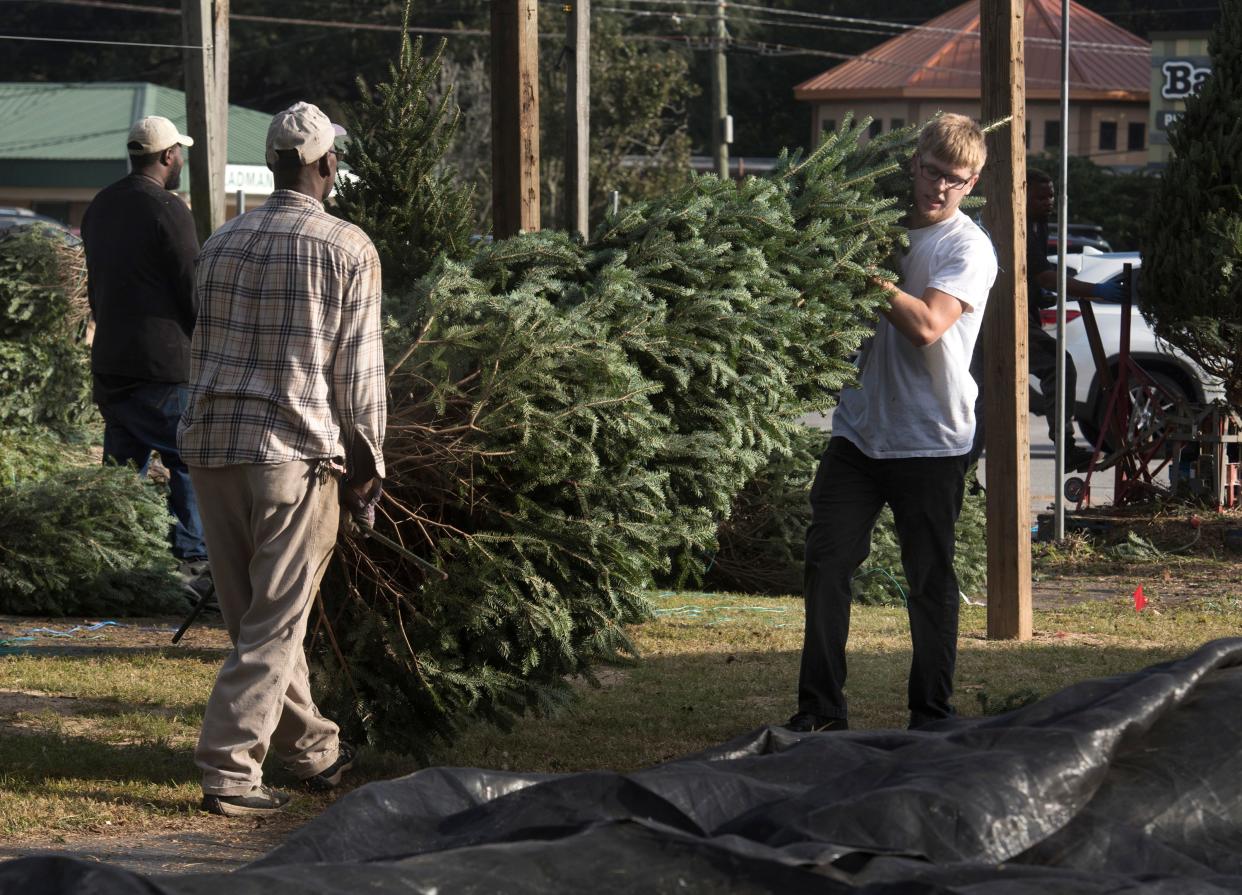How to dispose of your Christmas tree an be kind to environment

So, we traveled to West Jefferson last week for our annual Christmas tree trek. Choose and cut. We choose, but they cut. If one doesn’t know how to fell a Christmas tree, let the professionals handle it! Anyway, we drove this tree back to our home and will spend this weekend decorating the ol’ homestead for the Christmas holiday.
Let’s get back to trees, though. In the past I have written about the pros and cons of a natural Christmas tree versus an artificial (or reusable) tree. And yes, according to experts, there are equal amounts of reasons to buy a real tree as there are reasons to buy an artificial tree.
I prefer having the scent of the live tree in my home, and yet others will tell you that you can get a candle to provide that fragrance. A living tree helps to remove the carbon dioxide from the atmosphere through photosynthesis; cutting it down stops that process.
An artificial tree is made from products that are either mined from the earth or pumped from the earth; the production of all of the parts uses energy and materials and for the most part are landfilled. A live tree, on the other hand, will decompose and provide nutrients back to our soil.

Which brings me to the most wonderful, cool thing to do with your Christmas tree, after you undecorate it! Richard Rankin, the current headmaster at Gaston Day School, avid supporter of Catawba Lands Conservancy, contacted me regarding the disposal of Christmas trees in the county. Each year, the county allows folks to discard their Christmas tree for free until January 2023 (there should be a $4 Garb Card charge, but it’s a way the county can say belated Merry Christmas!)
Seems as though Dr. Rankin had worked on his own property many years ago to shore up the sides of a stream running through his property. The nature of Catawba Lands Conservancy is to “preserve wildlife habitat, protect water quality, working farms and scenic lands is a voluntary land preservation agreement, called a conservation easement. A conservation easement is a legally binding agreement between a landowner and a qualified conservation organization, such as CLC, that runs with the land perpetually and must serve a qualified “conservation purpose” providing a significant public benefit recognized by various conservation agencies and other entities.”
Stanley Creek Forrest is such a piece of land in need of some conservation. The stream has been eroded, and many gullies are present, making this land dangerous and challenging to humans and animals. Dr. Rankin suggested his tried and true method of stream restoration through the use of Christmas trees…carefully placed along the stream bed sides, the trees will, in time, decompose and provide adequate structure and nutrients to allow seeds and seedlings to grow and renew the stream banks.
All that being said, Gaston County Yard waste facility will be accepting Christmas trees for this very special and important partnership project. Bring your tree to the yard waste facility, 3120 Philadelphia Church Road, Dallas, for your tree to be a part of the stream solution! Any tree brought to other convenience sites simply is ground into mulch this spring.
If you can afford the extra milage, bring your tree to the Yard Waste Facility. Your tree will be part of a renewal project, assisting in the conservation and preservation of Gaston County! Pretty cool.
Nan Kirlin is recycling coordinator for Gaston County.
This article originally appeared on The Gaston Gazette: How to dispose of your Christmas tree an be kind to environment

